Aardonyx Guide:
Aardonyx was an early dinosaur that lived in South Africa about 200 million years ago.
Aardonyx was an early dinosaur that lived in South Africa about 200 million years ago.
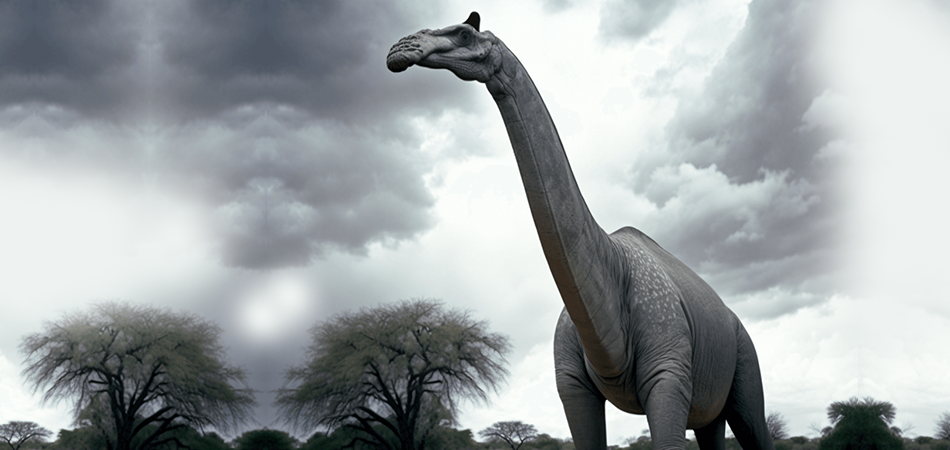
The Brachiosaurus, a truly colossal creature, was one of the largest dinosaurs to ever walk the Earth. It roamed the land during the Late Jurassic Period, approximately 150 million years ago. With its long neck and towering stature, the Brachiosaurus was the epitome of a giant, reaching heights of up to 85 feet and weighing as much as 80 tons. In this article, we’ll explore the fascinating world of this massive dinosaur, discuss other long-necked dinosaurs, and delve into some of the predators of the Brachiosaurus.
The Brachiosaurus was a type of dinosaur called a sauropod, characterized by its massive size, long neck, and equally long tail. Its front legs were longer than its hind legs, which resulted in an elevated posture and helped it to reach the foliage of tall trees. It had a relatively small head with a large nasal opening, possibly used for vocalization or thermoregulation.
The Brachiosaurus wasn’t the only dinosaur with a long neck. In fact, there were many other long-necked dinosaurs, including the Diplodocus, Apatosaurus, and Giraffatitan. These dinosaurs were all part of the sauropod family, sharing similar features such as a long neck, tail, and massive bodies.
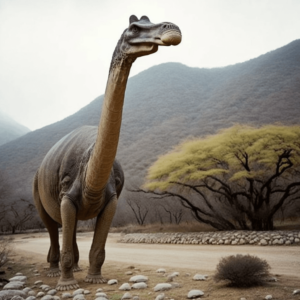
Despite its massive size, the Brachiosaurus was not invulnerable to predators. Some of the scary dinosaurs that might have preyed on a Brachiosaurus include the Allosaurus and the Ceratosaurus.
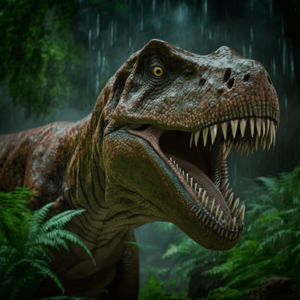
The Brachiosaurus, along with other long-necked dinosaurs, played a significant role in the complex ecosystem of the Late Jurassic Period. Understanding the interactions between these giants and their predators can provide valuable insights into the fascinating world of dinosaurs.
The Brachiosaurus, like other sauropods, was a herbivore, feasting on the abundant plant life that characterized the Late Jurassic landscape. Its long neck allowed it to reach the high branches of trees, providing access to food that was unavailable to other herbivorous dinosaurs. Brachiosaurus may have consumed up to 400 pounds of plant matter daily, including leaves, branches, and even small trees.
Interestingly, the Brachiosaurus’ teeth were designed for stripping leaves from branches rather than chewing. As a result, they swallowed their food whole, relying on gastroliths – stones present in their stomachs – to help break down the plant material. This method of digestion was not unique to Brachiosaurus, as other long-necked dinosaurs like the Diplodocus and Apatosaurus also employed it.
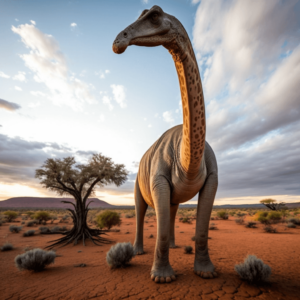
Although there is still much to learn about the social behavior of the Brachiosaurus, some paleontologists believe that these massive creatures may have lived in herds, providing safety in numbers and an increased ability to find food. Evidence of herding behavior in other sauropods supports this theory, and it’s possible that Brachiosaurus communicated with one another using a combination of visual and auditory signals.
One unique feature of the Brachiosaurus was its large nasal opening, which may have played a role in vocalization. Some scientists speculate that these giants could have produced low-frequency sounds to communicate over long distances, similar to modern-day elephants. These vocalizations may have been used to coordinate herd movements, warn of potential dangers, or even as a form of social bonding.
The reproductive habits of Brachiosaurus remain largely unknown, but it is believed that they laid eggs, like other dinosaurs. It’s possible that they used specific nesting sites where multiple individuals would gather to lay their eggs. These sites may have provided a safer environment for their young and increased access to resources.
Parental care among Brachiosaurus is a topic of ongoing debate among paleontologists. Some argue that the sheer size of these dinosaurs would have made it difficult for them to care for their young effectively. Others suggest that Brachiosaurus parents may have provided some level of protection to their offspring, much like modern-day elephants.
The Brachiosaurus has long captured the imagination of dinosaur enthusiasts, featuring prominently in books, movies, and television shows. One of its most memorable appearances was in the 1993 film “Jurassic Park,” where it was one of the first dinosaurs to be introduced to audiences. The sheer size and majesty of the Brachiosaurus have made it a popular choice for dinosaur toys and plastic model kits, allowing fans of all ages to appreciate its grandeur.
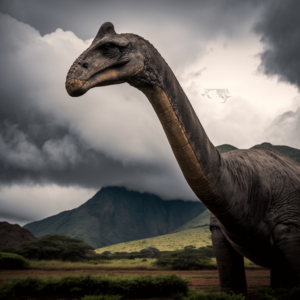
Although the Brachiosaurus is long extinct, it’s interesting to draw comparisons between these prehistoric giants and some of the largest animals that exist today. For example, the blue whale is the largest animal ever known to have lived on Earth, with an average adult length of 80-100 feet and a weight of up to 200 tons. While the Brachiosaurus was smaller in comparison, it still ranked among the largest dinosaurs of its time, with an estimated length of 69-85 feet and a weight of around 35-58 tons. The Brachiosaurus and the blue whale exemplify nature’s ability to produce truly colossal creatures, each dominating their respective habitats and showcasing unique adaptations that have allowed them to thrive in their environments.
In terms of diet, both the Brachiosaurus and the blue whale are specialized feeders. The Brachiosaurus, a herbivore, had a long neck that allowed it to reach the tallest vegetation, giving it access to food sources other dinosaurs couldn’t reach. In contrast, the blue whale has a filter feeder that primarily consumes krill, tiny shrimp-like creatures that swarm in massive quantities in the ocean. Blue whales are equipped with baleen plates in their mouths, which allow them to strain large amounts of water and filter out the krill.
The ecosystems they inhabit are also strikingly different. The Brachiosaurus lived during the Late Jurassic Period, around 155-145 million years ago, when the Earth’s climate was warm and tropical, with lush vegetation and vast inland seas. On the other hand, the blue whale thrives in the cold, nutrient-rich waters of the world’s oceans, where their immense size gives them a competitive advantage in acquiring food and deterring potential predators. These contrasting environments not only shaped the physical adaptations of both species but also influenced their behaviors and life cycles. While the Brachiosaurus foraged on towering trees in a lush landscape, the blue whale migrates over long distances in search of abundant food sources. This diversity in habitats raises intriguing questions about the history of life on Earth, particularly when did dinosaurs first appear, marking a significant evolutionary milestone in our planet’s biological narrative.
Despite their differences, the Brachiosaurus and the blue whale share some commonalities in terms of their role in their ecosystems. Both creatures serve as apex consumers, meaning that they have few if any, natural predators. As a result, they play a critical role in maintaining the balance of their respective ecosystems. Their immense size also means that they require a significant amount of resources, which in turn influences the distribution and abundance of other species in their environments.
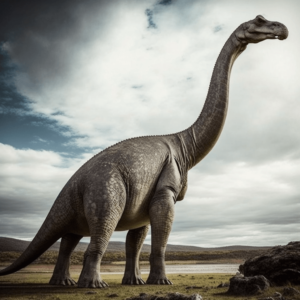
The Brachiosaurus and the blue whale represent two of the most magnificent examples of nature’s capacity to create enormous and awe-inspiring creatures. As we study these giants, we better understand the incredible diversity of life on our planet and the intricate relationships that define our ecosystems. Though the Brachiosaurus has long since disappeared from the Earth, its legacy endures in the continued fascination with its size and the lessons it can teach us about our world’s history and the creatures that inhabit it.